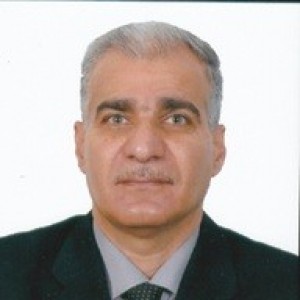Thesis
2011
Plasma properties of Audio frequency discharge using Sinusoidal, Triangular and Rectangular wave form voltages
2011-11-26
Experimental results of plasma properties electric discharge using pin plate electrodes
configuration initiated by audio frequency voltages in the range of 50- 10000Hz are presented.
Discharges’ properties at air pressures of 4x10-2, 4.4x10-2, 4.8x10-2, 5x10-2, 1x10-1, 5x10-1, 1,
5, and 10mb are measured using five electrode separations of 6, 7, 8, 9, and10 cm. Three kinds of
voltage wave forms (sinusoidal, triangular, and rectangular) are used as the driving voltage. A
special image processing based method is used to obtain numerical measurements of the discharge
I-V data. It is
found that I-V characteristics in audio frequency discharge are generally irreversible with the
discharge current taking two different values for the same voltage values when the voltage
increases and decreases resulting in a hysteresis like loop effect. Based on the fact that the
electric power pumped to the discharge is proportional to the loop area, it is found that there are
two frequency bands where the power absorption by the discharge assumes resonance type behavior.
The first frequency band below 1 kHz has ion density properties which can be associated with dark
Townsend discharge. The second absorption band is around 5 kHz and it has ion density properties
which can be associated with glow discharge mode. The maximum peak heights of the power dissipated
in the plasma, the plasma ion density and the plasma temperature show reflections of the Patschen
curve when studied against (pd) values. The alternate transitions from dark to glow or vice versa
during each AC cycle seem to compete against one another. It is also found that temperatures during
the glow discharge regime are only slightly higher than those during the dark discharge stage.
Electrode separation has only little effect on the plasma temperatures in
both discharge regimes.
Details of differences and similarities in behavior of plasma densities,
temperatures, and other properties against changing pressure between the
three voltage waveforms used are discussed.
1988
Theoretical Study on the interaction between the electromagnetic waves and Plasma in cylindrical coordinarets
1988-12-10
The wave guide is one of the important parts of the communication devices through which the power can be transferred in a wave form. The efficiency of the wave guide in creases as the loss of the energy transferred through it decreases. Many workers had studied the physical and geometrical parameters which attenuate the waves. Some experiments have been done the physical properties of the inner medium (the air), Which indicate that the average value of the field power transferred increases with increasing air pressure, by evacuation, or by exchanging the air into a highly ionized gas. The results of these experiments lead us to suggest that the electromagnetic field ionizes the air ( under the normal temperature and pressure) forming a plasma which absorbs the energy and leads to field attenuation.
Our work is devoted to conserve the field stability by using a relativistic electron beam which excites the formed plasma and by producing an electromagnetic field which compensates the losses in the original field.
The continuity equation, equation of motion, and Maxwell's equations for electromagnetic field are used as the initial equations. We calculates the plasma dielectric tensor which leads us to apply the boundary conditions at the plasma conductor inter face. The dispersion equation for E- and H- waves have been derived , After calculation of the growth rate for E- wave and equating it in to its damping rat we obtained the necessary condition for the field stability in the wave guide.
Back
